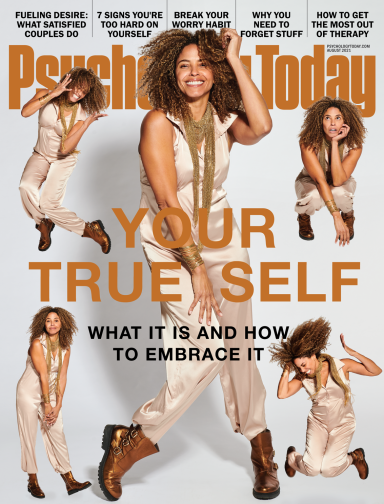
Robert J Maurer Ph.D.
Attention
The Currency that Makes a Relationship Thrive
The labor and delivery of love
Posted December 19, 2016

In our last blog, we shared that the research on the need for attention is dramatic and conclusive: we all require attention from others, and a lack of acknowledgment from important people in our lives can lead to health and relationship challenges across time. Our need for attention is as powerful as our need for food or water. We must have it to survive and thrive. This is obvious and requires no explanation when we think about infants and small children, but it becomes much less obvious as we grow into adults. Future civilizations may look back on us with a degree of confusion. They may wonder how it was that we were intelligent enough to invent computers and send rockets to Mars, but somehow concluded that the human need for attention had disappeared.
Assuming that you are one of the more insightful among us and you are aware of this need (which would make you very unusual indeed), how might you meet the needs of others and get your own attention needs met without making yourself and everyone you know uncomfortable? Certainly, the need for attention is more complex than it initially appears. As we’ve mentioned, although it is a true biological need, human beings don’t have a pain receptor to alert us to our need for attention. As a result, most of us haven’t developed rituals – consistent times, places, and strategies - to get these needs meet. Additionally, there are at least three primary types of attention we give to one another, and each individual tends to prefer one over the others without ever realizing it or sharing that preference with others.
So perhaps a “menu” describing the three types of attention might help all of us to more effectively address this need and, in the process, improve our health and our relationships. This is the currency that makes a relationship thrive. The three primary types of attention we typically share with one another are words, deeds and touch. Let me elaborate on each:
Words can be divided into two more specific types: compliments and questions. Some people embrace compliments, receiving and carrying them naturally, the way camels carry water. For others, compliments do not register meaningfully. They may simply have little value to a person, or perhaps in the past a person has received or given compliments that were not genuine. Questions are another type of attention delivered via words. Questions seek out information, showing others that you value their experiences and perspectives. If you are someone who loves it when people ask you questions, this may be your type! If, on the other hand, you feel that questions are an intrusion, then this is definitely not the type of attention that most suits you.
Deeds refers to specific actions that demonstrate our care. Recall from last month’s blog the marriage research done by John and Julie Gottman, where one of the key predictors of a happy marriage was positive attention outweighing negative attention 5:1 on the days when the relationship was not going well, and 20:1 when the relationship was soaring. This principle holds true for other important relationships as well. Fortunately, deeds do not have to be large or extravagant to make the difference. Instead, it is the small moments of positive connection, such as stopping your work to give your undivided attention to the other person, helping someone with a small task, sharing your appreciation, or even just your face lighting up when a person comes into the room, that provide the attention others need.
Touch is exactly what you might think it is. Does your partner give great hugs, run a finger along your cheek, or take your hand across the dinner table or while walking down the street? If this form of attention makes you feel cherished and closer to your partner, it may be the type of attention you most prefer. Touch can be shared in less intimate relationships as well, in the form of a warm handshake or clap on the shoulder when greeting, a hug when a friend or colleague has experienced success or sadness, a touch on the arm to simply let another know you care. While touch is not always a welcome form of attention for everyone, it can be a wonderful addition to your attention rituals with those who find it meaningful.
So how do we figure out what type someone prefers? The simplest way is ask your partner these questions: “How do you know you are loved? Those moments when you are so glad we met, what has triggered that thought or feeling?” With employees or colleagues at work, change the question to “How do you know you are appreciated?” Don’t expect an answer right away. You may want to even give the person a week to consider or even write out their answers. This will be beneficial to them, as it will help them to recognize their own needs and how they are best met; and it will be beneficial to you, in that you will best know how to meet their needs. Remember to write out these answers for yourself as well. As we now know, we all required attention from others. However, because we have no pain receptors for the need for attention, it is easy to pretend we don’t need recognition, appreciation, small acts of kindness and when we ignore this need, it is at great risk to our health and our relationships. We are most healthy and successful when we develop rituals to get these needs met.
Even smiling at someone, I feel as if I am doing something to make the world a better place.
Danny Glover, Actor







